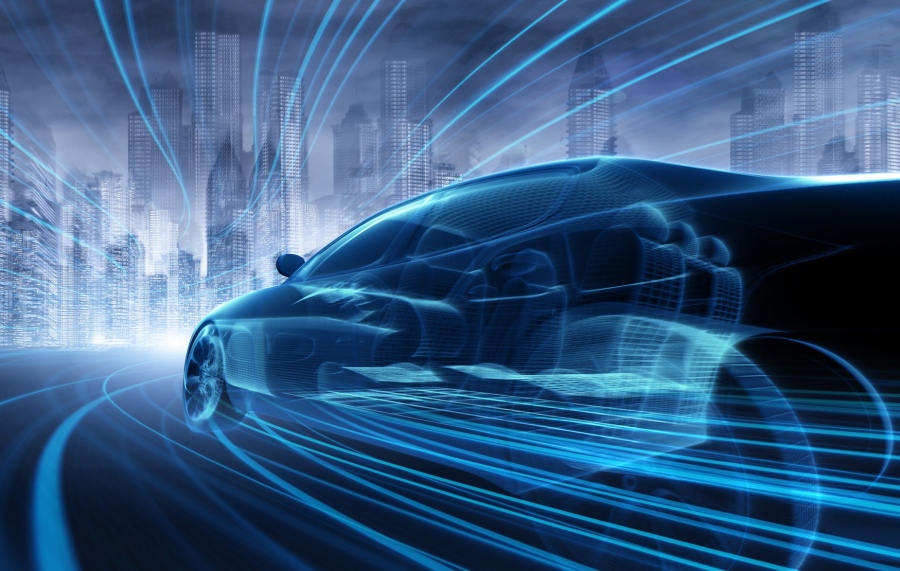Throughout the entire period of its existence, the car has performed a huge number of roles. It was a cult object, an indicator of luxury, and a cultural item.
In the modern world, a car is more of a means of transportation. Now you can easily pick up Budget car rental RDU Raleigh-Durham Airport for your road trip, or use the car for business purposes. However, despite the vehicle’s wide range of applications, it has always been both the source and the target of innovation.
Today, car manufacturers are doing their best to ensure we can enjoy a safe, comfortable and efficient ride. Innovation drives the development of high-tech automotive solutions. Let’s check which of them can change our world in the near future.
Autonomous Driving
Perhaps what’s most expected from the auto industry today is the massive introduction of self-driving cars. It would be really cool to rent a car for the trip, then relax in the back seat and wait for it to take you wherever you want.
Well, when will such cars appear? In fact, they are already here. Tests and trial operations of such vehicles are underway in many countries, while in some American states, their commercial operation begins. Thus, now we are at the very beginning of a transportation revolution that will make drivers unnecessary and our road trips cheaper and safer.
Indeed, safer! After all, 9 out of 10 accidents are caused by the human factor, and unmanned vehicles should exclude it. So why is the adoption of autonomous cars not going as fast as we want? Today, the high cost of autonomous driving systems, legislative issues, and the fear of many people to rely on a car without a driver remain obstacles. And yet, despite this, we will still see unmanned vehicles on the roads in the coming years.
Road Safety and Optimization
Another long-discussed technology that may finally gain widespread acceptance in the coming years is the connected car. The connected car is able to exchange information with other such cars and road infrastructure, as well as receive data about other road users or obstacles on the way.
Why is this necessary? The main goal is to improve safety and prevent accidents, as well as optimize routes. This is especially relevant when you are driving a rental car in such densely populated cities as New York or Los Angeles.
The idea of a connected car is that cars should unite into a wireless network and exchange information with each other about speed, the direction of movement, traffic congestion, road works, etc. This is necessary in order to warn the driver and help him avoid a collision or change the route in time if there’s a traffic jam ahead.
There are no technical obstacles to the implementation of such systems, and widespread use is hindered mainly by the lack of a single standard and the need to allocate radio frequency ranges for organizing a wireless data exchange network.
Hydrogen-Powered Cars
How often do you think about the dangers of harmful emissions when you rent a car for your trip? This question is very relevant today, which is why car rental companies are increasingly giving preference to electric cars.
However, now more and more information sources claim that electric vehicles are far from being as environmentally friendly as their manufacturers suggest. The main problem is that the production and disposal of electric vehicle batteries create an even greater burden on the environment than conventional vehicles.
In this regard, hydrogen cars, which emit only pure water vapor, are beginning to look much more attractive. Plus, their refueling time is much shorter than charging electric vehicles, while their autonomy is comparable to conventional cars. Hopefully, such cars will appear in the coming years.
Auto-Dimming Sun Visor
Today, you won’t surprise anyone with the adaptive and active headlight systems that are installed on many production models. These systems form a light beam created by the main and auxiliary headlights, changing its range, width, and direction, depending on the vehicle speed, the steepness of turns, the presence of oncoming and passing vehicles, pedestrians, etc.
However, poor visibility of the road occurs not only in the dark but also on a bright fine day, when the sun literally blinds the driver. The traditional solution – a sun visor – limits the field of view and doesn’t always completely block out the sun’s rays.
Modern technologies make it possible to make a visor or light protection strip at the top of the windshield with adaptive dimming when the transparency of only the sun-lit areas of the visor decreases. Prototypes of such systems have already been developed and, probably, soon we will see them on real cars.
Advanced Electronics
Today it’s difficult to imagine a car without infotainment systems, and when you rent a car, you want to get as a new and technologically advanced model as possible.
We see a trend towards an increase in the number of displays in the cabin, their size, and integration into single systems. They display information about the parameters of the car and show various navigation, news, and entertainment content.
In short, the interior of the car will gradually turn into a kind of head-up monitor that will capture an even larger area of the interior surface. Even the windshield can be turned into a display with information from augmented reality systems.
And what about the sound? Once only radio with a single loudspeaker was installed in cars, now you enjoy multichannel music systems with about a dozen speakers, and in the future, the interior panels will turn into sound emitters.

